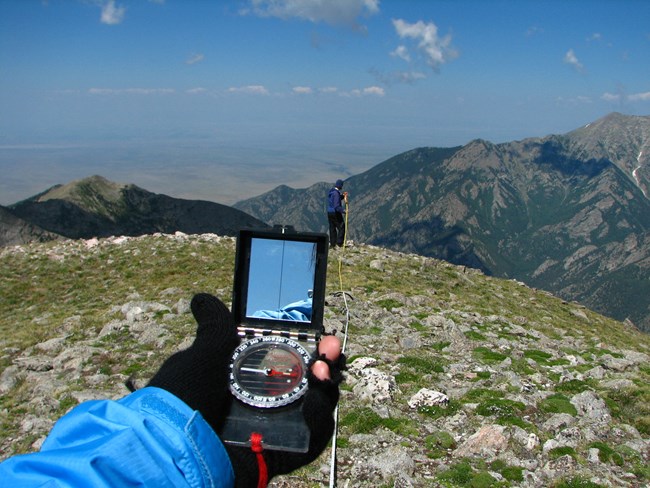
Importance/IssuesThe alpine environment is the product of the interaction of extreme natural conditions, such as high winds, low temperatures, scouring and burial by snow and ice, high incident solar radiation, thin atmosphere, and a short growing season. Monitoring Objectives
Protocol Development and StatusThe Rocky Mountain Network has published an Alpine Vegetation & Soils protocol, which adapts an international protocol to monitor vegetation and climate changes in alpine communities. The Global Observation Research Initiative in Alpine Environments (GLORIA), is a monitoring program initiated in 2001 with a goal of providing a global baseline for vegetation monitoring in alpine environments and assessing the risks of biodiversity loss and ecosystem instability from climate change. Monitoring data are collected across the globe by local cooperators using an array of soil temperature loggers and long-term plots to measure vegetation on a set of neighboring peaks. Several national parks contain GLORIA monitoring sites throughout the western United States. A GLORIA site was established in Glacier National Park by the USGS Northern Rocky Mountain Science Center in 2003. The Rocky Mountain Network, with the help of park staff, established GLORIA sites in Rocky Mountain National Park and Great Sand Dunes National Park and Preserve in 2009. In 2011, the Rocky Mountain Network, with assistance from the park and the Greater Yellowstone Network and Colorado Natural Heritage Program, established a site in Yellowstone National Park. We are working with our park and network partners to collaboratively monitor this series of alpine sites for the long-term along a broad latitudinal gradient in the Rocky Mountain Region. Parks This Protocol is Monitored AtVital Signs This Protocol Monitors
Reports & PublicationsSource: NPS DataStore Saved Search 976. To search for additional information, visit the NPS DataStore. Source: NPS DataStore Saved Search 967. To search for additional information, visit the NPS DataStore. Source: NPS DataStore Saved Search 966. To search for additional information, visit the NPS DataStore. |
Last updated: June 17, 2021
